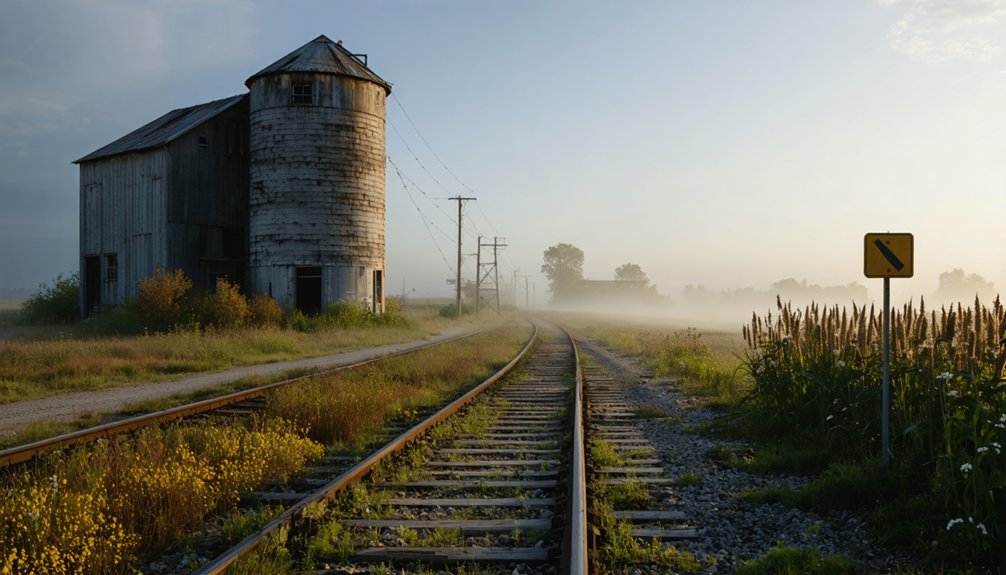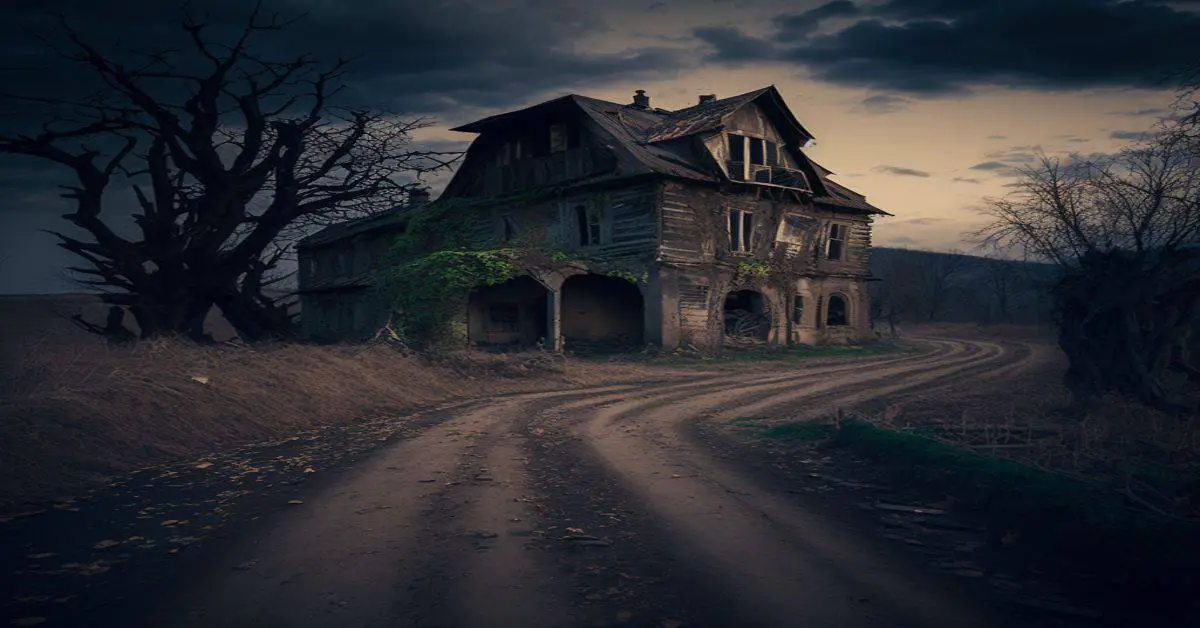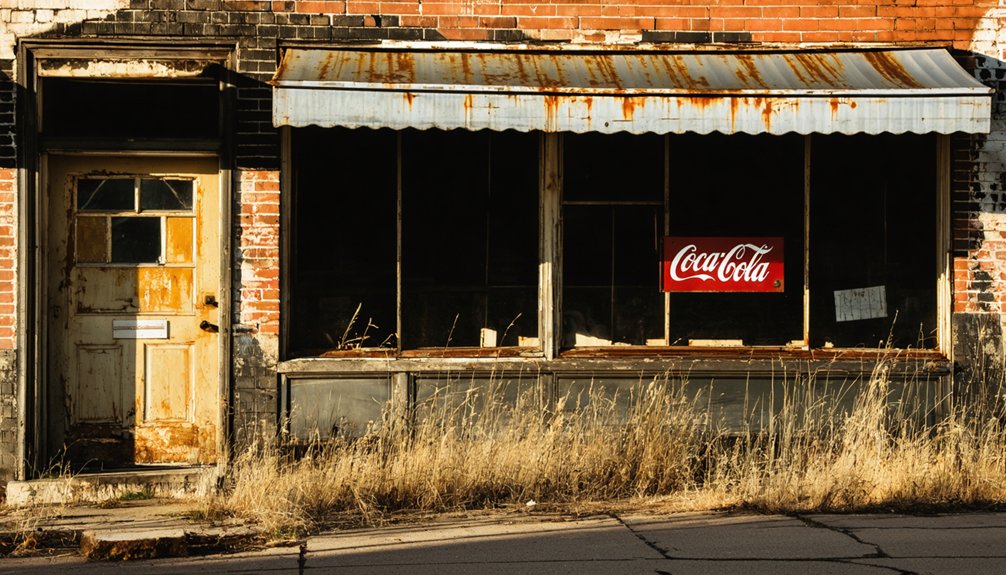You’ll find Reeds Crossing, an abandoned settlement in Spring Township, Boone County, Illinois, situated at coordinates 42°12′05″N and 88°47′55″W. This ghost town, located three miles south-southeast of Belvidere, was once a thriving agricultural community centered around religious gatherings and farm events. Its decline mirrors other Illinois settlements that were bypassed by modern transportation networks. The site’s rich history in Boone County’s development holds countless untold stories beneath its prairie soil.
Key Takeaways
- Reeds Crossing was an abandoned settlement in Spring Township, Boone County, Illinois, located three miles south-southeast of Belvidere.
- The settlement declined after being bypassed by modern transportation routes, leading residents to seek opportunities elsewhere.
- Daily life centered on agricultural practices, with community bonds formed through religious gatherings and farm events.
- No original architecture remains, as the ghost town’s footprint has largely reverted to farmland and natural vegetation.
- The site’s historical significance lies in demonstrating 19th-century rural settlement patterns and agricultural development in Boone County.
Location and Geographic Setting
Reeds Crossing, an abandoned settlement in Spring Township, Boone County, Illinois, sits at precise coordinates of 42°12′05″N and 88°47′55″W.
You’ll find this ghost town approximately three miles south-southeast of Belvidere, positioned at an elevation of 837 feet above sea level.
The site’s environmental features reflect northern Illinois’ characteristic landscape, with gently rolling prairies and rich agricultural soil that once supported a thriving farming community.
Like many other lost Illinois settlements, the site was eventually abandoned and its buildings disappeared over time.
You’re in the heart of the Rockford-Freeport-Rochelle area, where the geographic coordinates place you squarely within the outer reaches of the greater Chicago metropolitan region.
Nestled within the bustling Rockford-Freeport-Rochelle corridor, this location marks the northwestern edge of Chicago’s sprawling metropolitan influence.
The settlement’s terrain includes minor waterways and drainage systems typical of the region, while the surrounding land has returned to its agricultural roots. Historical enthusiasts can examine 9 topographic maps on Pastmaps.com to study the area’s geographic evolution.
North of the former town of Herbert, Reeds Crossing exemplifies the area’s historical settlement patterns.
The Rise and Fall of a Prairie Settlement
Like many prairie settlements of the nineteenth century, the story of Reeds Crossing reflects both the promise and precariousness of frontier life in northern Illinois.
You’ll find that early settlers established agricultural practices focused on woodland areas rather than tackling the tough prairie sod, while maintaining a tight-knit community of fewer than 100 residents.
The settlement’s community dynamics centered around religious gatherings and farm-related events, creating bonds that helped residents cope with frontier isolation. The region’s settlers maintained strong beliefs in supernatural folklore, similar to other isolated frontier communities of the era.
Similar to how Route 66 towns declined after being bypassed by Interstate 40, Reeds Crossing’s future dimmed without essential transportation links. While nearby Belvidere grew, this small prairie hamlet couldn’t compete.
The lack of railroad connections and industrial development left the settlement vulnerable to economic shifts, and residents gradually departed for more promising opportunities.
Eventually, Reeds Crossing joined the ranks of Illinois’s abandoned prairie settlements.
Daily Life in Early Reeds Crossing
Life in early Reeds Crossing revolved around the fundamental challenges of prairie settlement, where daily routines centered on manual labor and agricultural subsistence. You’d have found yourself grinding corn for Johnny cakes while battling the region’s stubborn soil and limited water access. The pioneers had to dig deep wells between 20 to 40 feet to access their water supply.
As you worked your land, farming challenges meant you couldn’t rely solely on crops, so you’d supplement your family’s needs through hunting, fishing, and trapping. The Methodist church community offered spiritual support and guidance during these difficult times.
Social gatherings offered relief from the daily grind, often combining work with pleasure. You might’ve joined your neighbors for communal road building or participated in local harness racing events.
When you weren’t tending to livestock or blazing paths through dense forests with your axe, you’d gather with other settlers in family colonies, creating the tight-knit community bonds essential for survival on the prairie.
Historical Significance in Boone County
As you explore Reeds Crossing’s historical significance, you’ll find it played a key role in Boone County’s early settlement patterns during the 19th century.
The settlement’s strategic position near Mosquito Creek, with its bridge serving as an essential transportation link, contributed to the movement of people and goods between major towns like Belvidere and Herbert.
While the ghost town now stands as a silent witness to changing times, its existence helps historians understand the development of Spring Township’s rural community network and the broader evolution of Boone County’s settlement landscape.
Early Settlement Patterns
During the early nineteenth century, Reeds Crossing emerged as one of several small settlements dotting the northern Illinois prairie landscape, establishing itself three miles south-southeast of Belvidere in Spring Township, Boone County.
The settlement dynamics followed a familiar pattern seen throughout the region, with pioneer families clustering around strategic crossroads that offered natural gathering points for the surrounding agricultural community. Like many early settlements in Illinois, it shared characteristics with Old Shawnee Town, which became the oldest incorporated town in the state. Historical enthusiasts can now explore these settlement patterns through nine topographic maps available online.
Like many frontier settlements of its era, you’ll find that Reeds Crossing exemplified the cultural continuity of early Illinois hamlets.
The community centered around basic services supporting local farmers, likely including a general store or blacksmith shop.
While it never grew into a formal village, Reeds Crossing played an essential role in connecting isolated farmsteads and fostering the social bonds crucial to frontier life.
Transportation Network Impact
The railroad networks of Boone County shaped the destiny of Reeds Crossing from its earliest days, expanding upon the settlement patterns that first drew pioneers to the area.
You’ll find that the town’s strategic location near key railroad routes, particularly the Chicago, Burlington and Quincy Railroad, initially fueled its growth and commerce.
As rail transportation evolved, however, significant shifts occurred that would seal the town’s fate.
When railroad routes changed and safety standards evolved, Reeds Crossing found itself increasingly isolated from essential transportation arteries.
Similar to Buda’s decline from its peak of 1500 residents, the shifting transportation landscape contributed to the town’s eventual abandonment.
The advent of automobiles and modern highways further diminished the town’s relevance, as transportation shifts favored other communities.
Today, you can still trace the ghost town’s history through remaining rail infrastructure, proof of an era when railroad access determined a community’s survival or decline.
Rural Community Development
While many rural settlements dotted Boone County’s landscape in the 19th century, Reeds Crossing stands out as a quintessential example of the region’s agricultural development patterns.
You’ll find its story reflects the broader narrative of rural governance and community resilience in northern Illinois, where small farming communities emerged to support local agricultural needs. Similar to how trade and steamboats once defined Griggsville Landing’s prosperity, Reeds Crossing played a vital role in local commerce.
The settlement’s development followed typical patterns of the era, with family networks forming the backbone of community life.
Though Reeds Crossing didn’t survive the economic shifts that transformed American agriculture, its legacy persists in historical records.
You can trace how this hamlet, like many others, contributed to Boone County’s agricultural heritage through its close-knit farming families, informal social structures, and mutual aid practices that characterized 19th-century rural life.
Natural Features and Landscape Changes
Situated within Spring Township of Boone County, Illinois, Reeds Crossing occupied a landscape characterized by flat to gently rolling terrain at an elevation of 837 feet.
You’ll find the abandoned settlement positioned between Belvidere and Herbert, where the once-bustling community has given way to natural recovery. The area’s original prairie landscape, typical of northern Illinois, has experienced significant changes over time.
As the settlement declined, ecological succession transformed the built environment. You can trace how agricultural expansion and railroad changes influenced the town’s abandonment, while the surrounding landscape gradually reclaimed former residential and commercial spaces.
Today, the ghost town’s footprint has largely disappeared, with the land either returning to farmland or reverting to natural vegetation patterns characteristic of the region.
Legacy and Cultural Impact
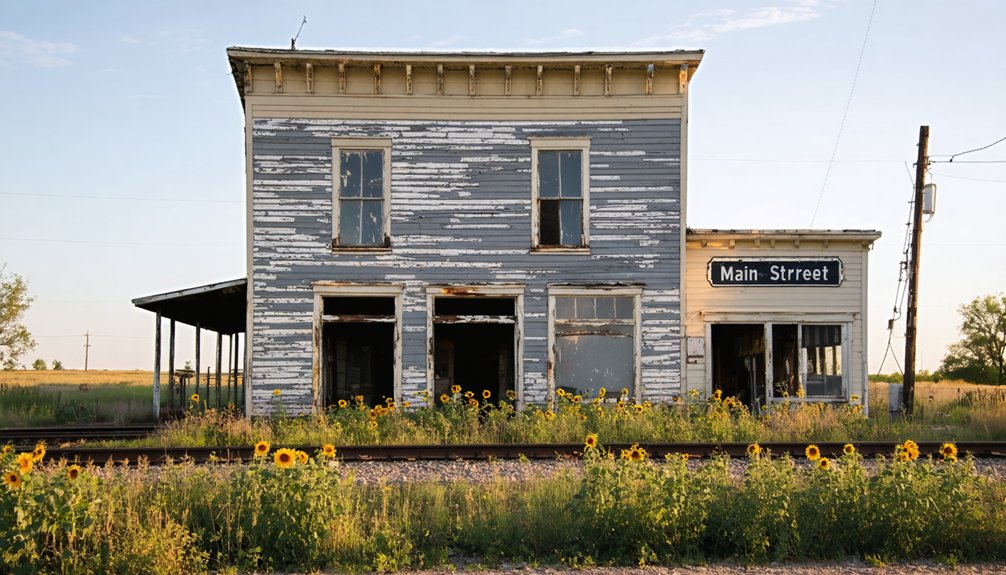
When you explore Reeds Crossing’s historical memory today, you’ll find its influence woven into Boone County’s cultural fabric through oral histories, maps, and local museum collections.
While few architectural remnants survive, the ghost town’s footprint reveals key settlement patterns that shaped northern Illinois’ development during the 19th century.
The site’s legacy continues to inform researchers and historians about pioneer life, serving as a tangible connection to early American frontier experiences and the evolution of rural communities.
Historical Memory Preservation
Although Reeds Crossing has physically vanished from the Illinois landscape, its historical legacy endures through dedicated preservation efforts and cultural memory initiatives.
You’ll find its story carefully documented in historical journals and digital archives, ensuring that future generations can connect with this important piece of Illinois heritage. Local historical societies and community members work together to maintain records, maps, and personal accounts that tell the tale of this once-thriving settlement in Boone County.
Through online platforms and educational programs, you can explore Reeds Crossing’s past and understand its role in the region’s development.
These memory preservation efforts don’t just protect historical facts – they keep alive the spirit of a community that helped shape the cultural heritage of Spring Township and surrounding areas.
Architectural Remnants Today
Today’s visitors to Reeds Crossing will find few tangible reminders of this once-active settlement, as minimal architectural traces remain visible in the rural Illinois landscape.
Unlike other Illinois ghost towns that showcase preserved architectural styles through standing structures or ruins, Reeds Crossing’s physical legacy exists primarily in subtle infrastructure patterns – old roads and property boundaries that hint at its former layout.
You won’t find any preservation efforts focused on buildings or structures, as no original architecture has survived.
While the site’s location three miles south-southeast of Belvidere suggests proximity to historic pathways, the absence of standing structures, historical markers, or curated artifacts means you’ll need to rely on your imagination to envision the settlement’s former architectural character.
Pioneer Settlement Patterns
Since Reeds Crossing emerged during Illinois’ pivotal 1830s settlement period, its development reflects broader patterns of pioneer community formation throughout the state.
You’ll find that settler motivations centered on careful planning, with many pioneers conducting thorough research before migration, particularly evident in the organized 1834 New Jersey group’s arrival.
The area’s development showcases how pioneers adapted to local conditions, implementing agricultural innovations despite timber scarcity challenges.
They transformed prairie lands through scientifically-informed farming methods, influenced by agricultural experts like Morris Birkbeck and George Flower.
You can trace how these early settlers created lasting social networks based on shared origins and experiences, establishing the foundations for education, local governance, and community institutions that would shape Illinois’ agricultural prominence in later decades.
Modern-Day Exploration Guide
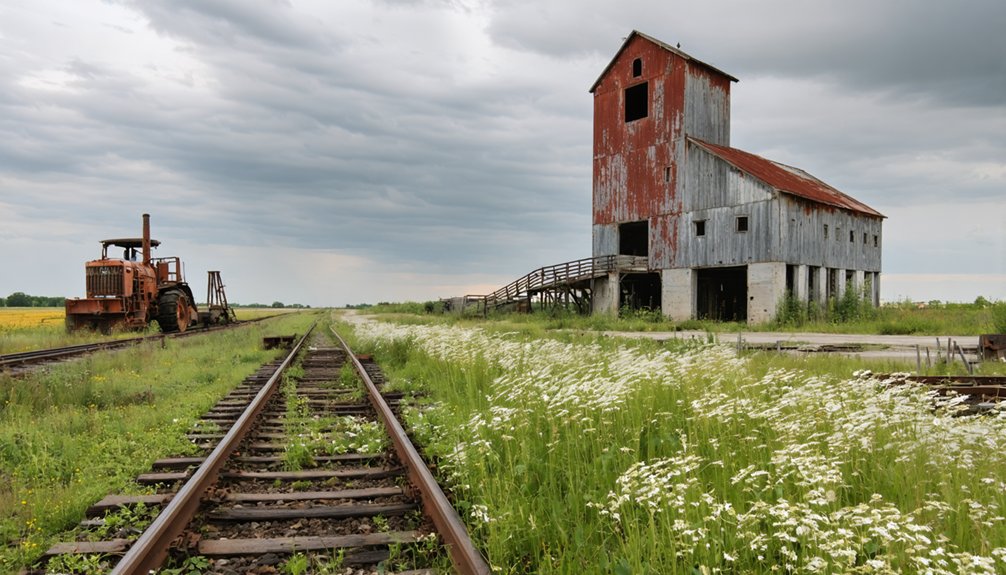
Adventurous explorers seeking to visit Reeds Crossing ghost town can find the site approximately three miles south-southeast of Belvidere in Boone County, Illinois.
You’ll need to navigate local rural roads and come prepared with historic maps to identify the former settlement’s boundaries and potential artifact locations.
Before starting your ghost town exploration, obtain necessary permissions since the area lies on private farmland.
Bring essential supplies, GPS equipment, and protective gear as there aren’t any facilities nearby.
Spring and fall offer ideal conditions for examining the terrain, where you might discover old roadbeds and property lines hidden beneath seasonal vegetation.
While searching for rural artifacts, use metal detectors in compliance with local regulations, and remember to follow leave-no-trace principles to protect this piece of Illinois heritage for future generations.
Preservation and Research Opportunities
While Reeds Crossing‘s physical remnants continue to fade, numerous opportunities exist for preserving and studying this historic settlement. Through community engagement and careful examination of archival resources, you’ll find multiple ways to contribute to the site’s preservation and historical understanding.
Local historical societies hold untapped manuscripts and property records, while systematic archaeological surveys could reveal valuable artifacts about daily life in this former settlement.
- Partner with universities for multidisciplinary research projects
- Participate in oral history initiatives to document local memories
- Support archaeological surveys using non-invasive methods
- Apply for preservation grants to protect remaining structures
- Contribute to public history programs through exhibitions and lectures
You can help safeguard this piece of Illinois heritage while expanding our knowledge of 19th-century rural settlements through these preservation efforts.
Frequently Asked Questions
Were There Any Notable Crimes or Criminal Activities in Reeds Crossing?
You won’t find crime statistics or notorious criminals documented in Reeds Crossing’s historical records. Available research shows no evidence of significant criminal activity during the town’s inhabited period.
What Indigenous Tribes Occupied the Area Before Reeds Crossing Was Established?
Ever wonder who first called this land home? You’ll find the Potawatomi tribe dominated the area, sharing territories with Chippewa, Menominee, and Winnebago peoples throughout Illinois history before European settlement changed everything.
Did Any Famous People or Historical Figures Visit Reeds Crossing?
You won’t find records of any famous visitors or documented historical figures at this location. The settlement’s limited historical significance meant it didn’t attract prominent personalities worthy of historical documentation.
What Businesses or Industries Operated in Reeds Crossing During Its Peak?
Like many Prairie State pioneers, you’d have found general stores, blacksmith shops, and farming operations thriving before railroad expansion bypassed the town. Local agriculture remained the backbone of daily commerce.
Were There Any Documented Epidemics or Natural Disasters in Reeds Crossing?
You won’t find documented epidemic outbreaks or natural calamities specific to this settlement. While the region faced typical Midwest weather challenges, there’s no evidence of devastating events impacting this particular community.
References
- https://www.gothichorrorstories.com/haunted-travels/ohio-river-valley/native-americans/betsey-reed-white-lady/
- http://genealogytrails.com/ill/winnebago/history_towns.html
- https://www.routemagazine.us/stories/loneliest-places-along-route-66
- https://en.wikipedia.org/wiki/Reeds_Crossing
- https://pastmaps.com/explore/us/illinois/lasalle-county/reed-crossing/hiking-exploration
- https://pastmaps.com/explore/us/illinois/lasalle-county/reed-crossing/metal-detecting
- https://drloihjournal.blogspot.com/p/lost-towns-of-illinois-series.html
- https://drloihjournal.blogspot.com/2022/09/lost-towns-of-illinois-reeds-crossing.html
- https://en.wikipedia.org/wiki/List_of_ghost_towns_in_Illinois
- https://en.wikipedia-on-ipfs.org/wiki/Reeds_Crossing
